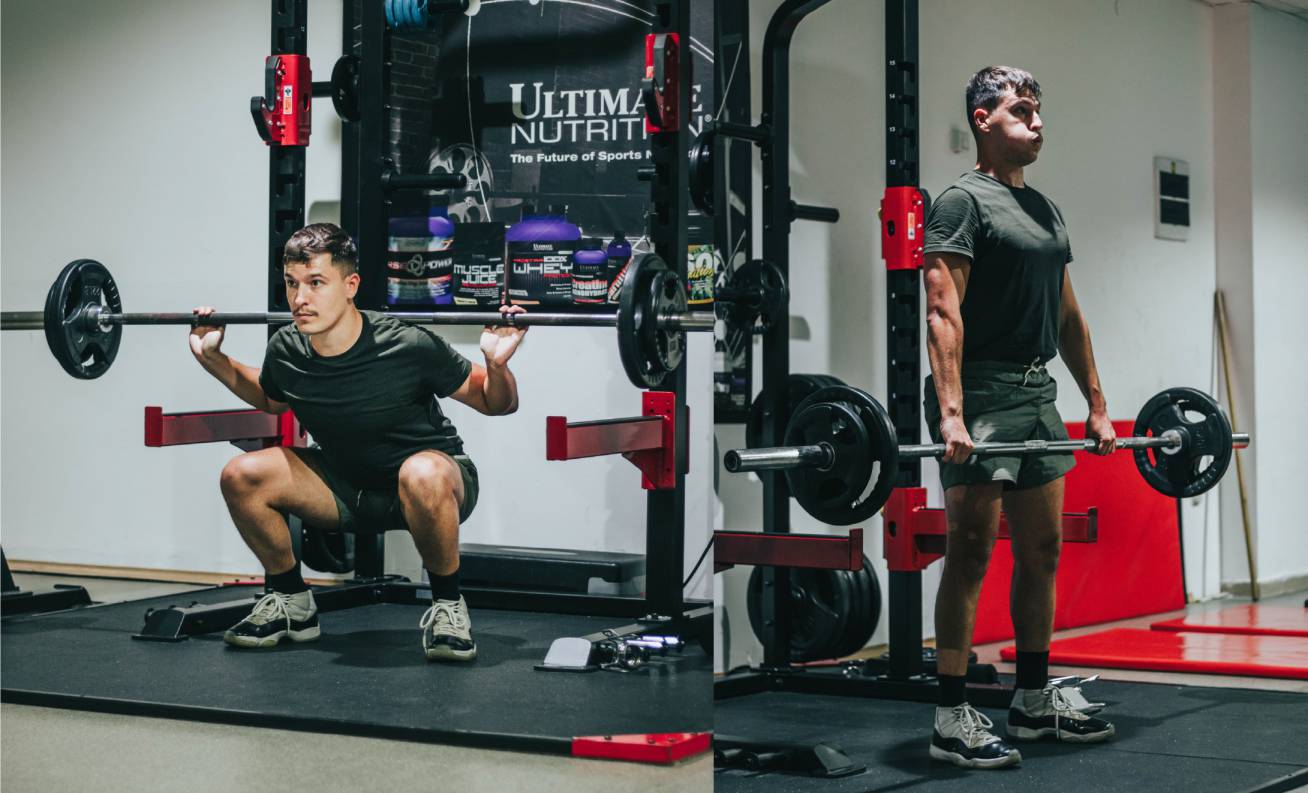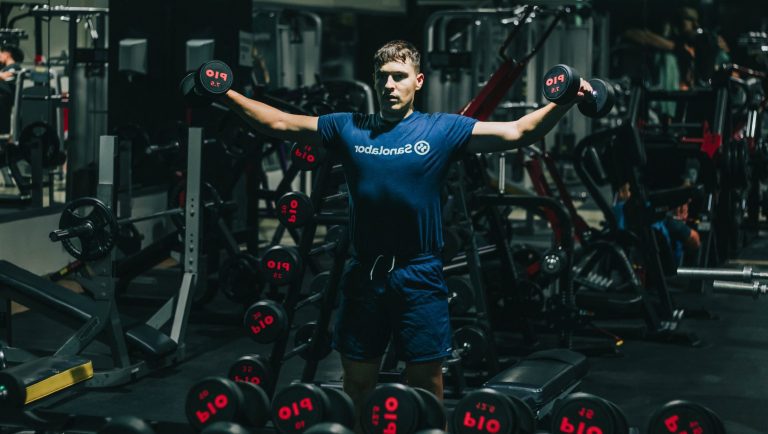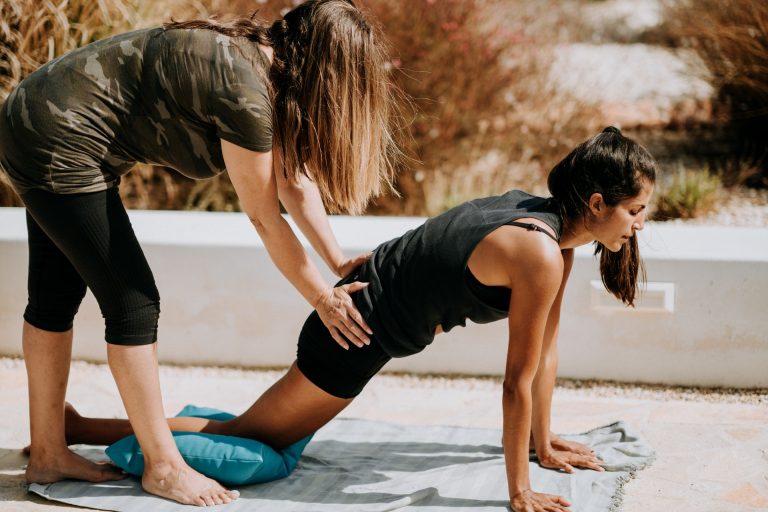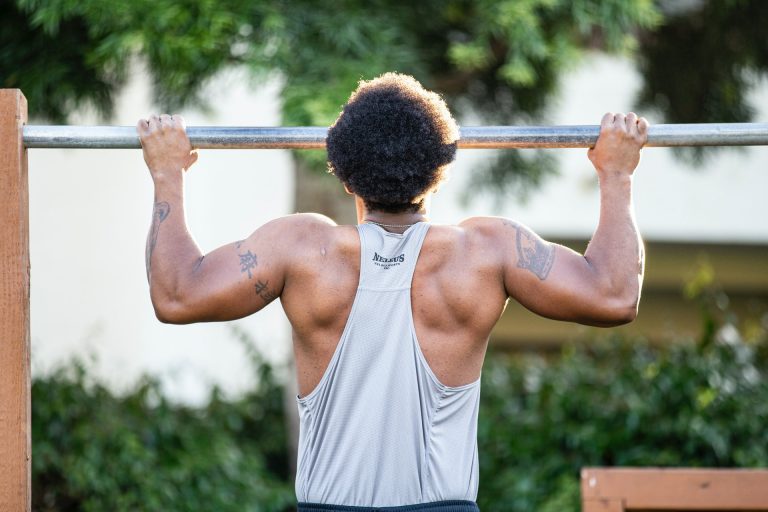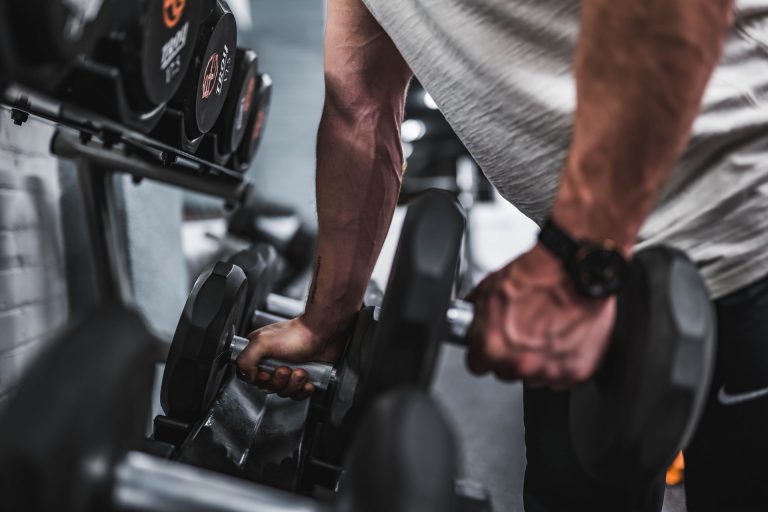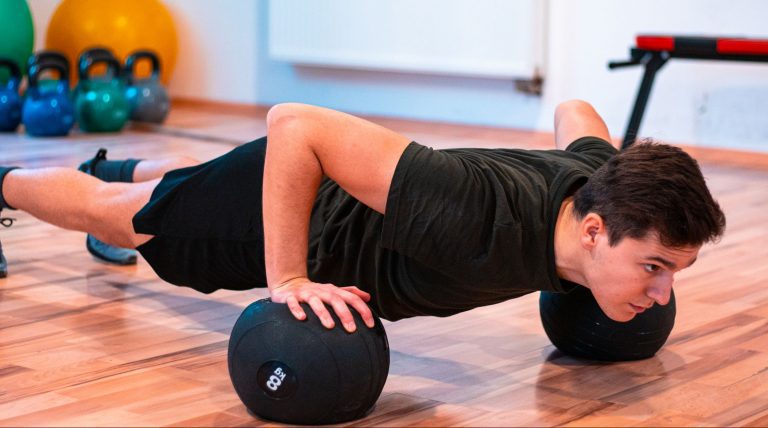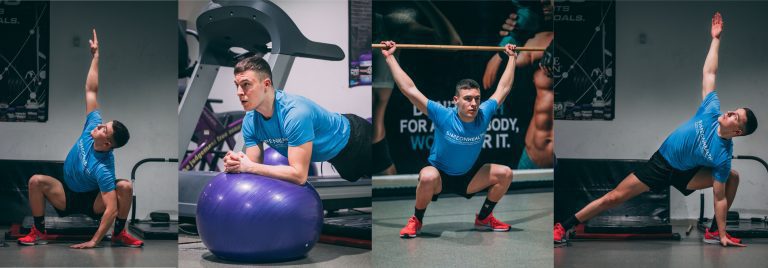Top 6 Compound Exercises: Squat, Dips, Pull-Ups, Bench Press, and Overhead Press
Why Choose Compound Exercises
The primary reason to incorporate compound weightlifting is the activation of large muscle mass, which is great for your whole body. (1) Most compound movements are functional in nature, meaning the movement translates into your life instead of just pumping a muscle for aesthetics.
While there is nothing wrong with using other isolation methods, if the majority of your workout (80%) consists of isolation movements, you are more likely to develop shortened muscles and weaker stabilizers which leads to bad posture.
The 70-30 Rule
The 70% to 30% rule is a ratio of exercises you incorporate in your weightlifting session, for a healthy and functional body.
- 70 % Dominance – Compound Exercises like squats, pull-ups, bent-over rows, lunges, bench and overhead press, dips, handstand pushups, dumbbell press, and many more.
- 30 % of Isolation Exercises pump the muscles at the end, once they are already tired. So exercises like triceps cable pulldown, leg extension, Nordic hamstring pull, dumbbell fly, biceps curls, lateral shoulder raise, pec dec, and many more.
This method will ensure that you gain functional strength, while still keeping the muscle pumping, lactate increasing, and muscle fiber tearing to increase muscle mass.
If you just do isolation, as we’ve discussed before you might end up with not-so functional body which means you may be big and aesthetic, but you can only push or pull weights in a limited Range of motion which doesn’t significantly help/translate in your daily life tasks/activities.
If you only do compound exercises, you will gain functional strength, and have better translation and range of motion, while also improving your hip and shoulder mobility, hip and core stabilization, and posture. Of course, if done correctly.
bonus tip
Make sure you do your compound lifts first, right after the warm-up instead of keeping them in the last part of the workout. Compound exercise requires more energy because they recruit more muscle fibers and higher muscle mass percentage since we are performing multi-joint movement which needs stabilization/co-activation. Keep the Iso exercises last on your list.
Top 6 Compound Exercises
Here we’ll look at the most common bodybuilding exercises which of course can be done both with or without weights depending on your fitness level. In each exercise you’ll learn how to perform the exercise, where that specific movement applies in your daily life, which muscles are activated, and common variations you can do.
- Make sure you check out our functional warm-up for weightlifting and discover why functional is the healthiest way to train your body.
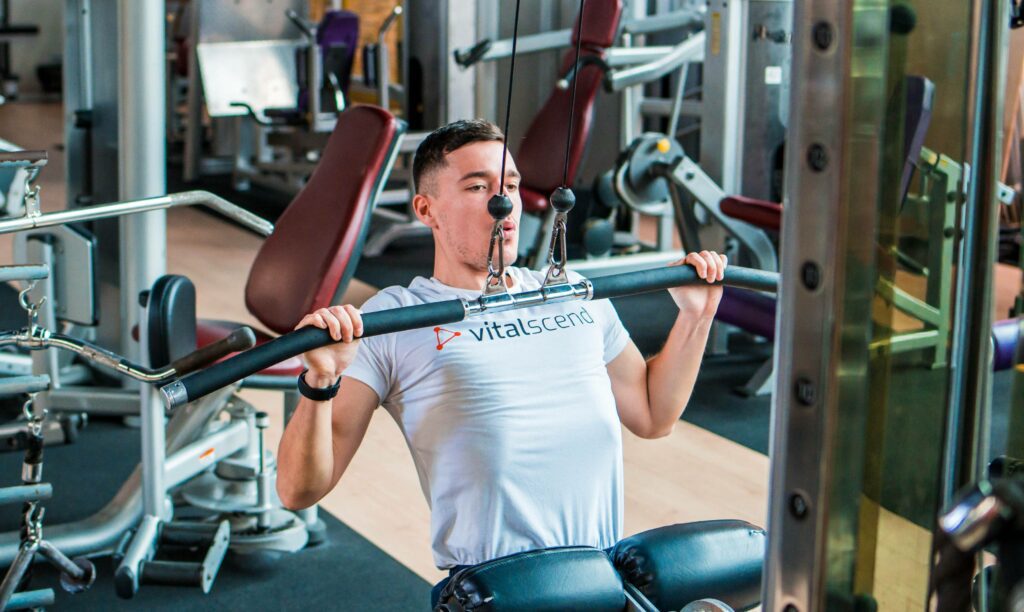
Pull-Up / Pull-Down
The classic bodyweight exercise can be highly manipulated, with assisted weights, weighted, or even as pull-down on a machine. When it comes to posture, pull-ups and pull-downs are what you should look at, since most people have tight and powerful chest and upper traps, but lack the rhomboid muscle and mid-traps that retract the scapula, crucial for proper posture and thoracic extension.
Perform
Kinesiology
Muscle Activation
Varieties
Perform: Grip the Bar with your hands set wider than your hips, squeeze your shoulder blades together (active hang), activate your core and point your toes forward (plantar flexion) and pull yourself up until the chin comes over the bar, then slowly go in the starting position and repeat.
Kinesiology: The point of doing pull-ups is to improve your posture, strengthen your back, activate your scapular retractors, gain stability in pull motion, and strengthen your biceps. Pull-up can translate as a movement anytime you are pulling something, like the trash, lifting an object in a pulling motion, or opening a tough door.
Muscle Activation: Trapezoid (upper, lower, and medium), Latissimus dorsi, Biceps, Teres Major, Posterior Deltoids, Core stabilizers, Teres Minor, External Oblique and Rhomboids (minor, major)
Varieties: Chin-ups, Close Grip Pull-ups, Machine-assisted pull-ups, Machine Pull-Downs, and Eccentric (negatives) Fall-downs.
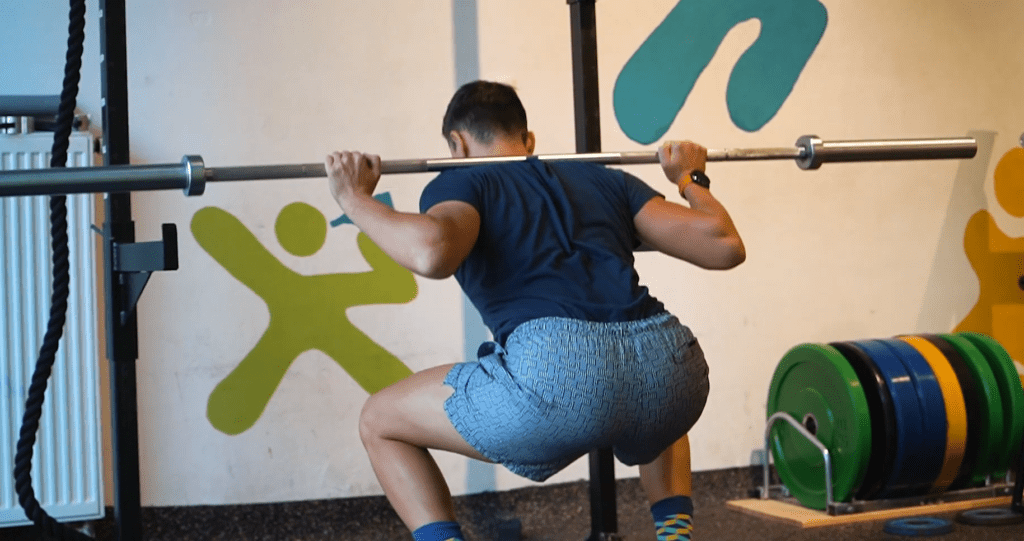
Squat
One of the most important, functional body exercises that activates the largest muscles in one’s body, dominantly focusing on the legs, while also incorporating core stabilizers and upper back muscles. It is a movement done from stance, where we are pushing our hips back and bending our knees, to lower our center of gravity and reach an object down below.
Perform
Kinesiology
Muscle Activation
Varieties
Perform: Set the Bar at your Shoulder height and put the proper weight on it, Go under the bar in a facing direction, place the bar on your trapezoid muscles, grip it wider than your shoulders, squeeze your shoulder blades and unrack pushing with extended knees, go back and set your feet hip-width or a bit wider, point your toes slightly outward, take a breath and hold it tight activating your core, slowly lower the bar squatting down, push your hips back, keep a neutral spine and point your knees in direction of your feet going as deep as you can with correct posture, then lift back up and lock the knees extending fully and repeat. When done, slowly walk forward and leave the bar safely.
Kinesiology: From a Kinesiological perspective, I view squat as one of the most fundamental, essential, and important movements. It activates the biggest muscles in our body. To safely perform a squat, three main points are: keep your spine neutral, point your knees in direction of your toes, place the force on your whole foot, and never squat on your toes.
Muscle Activation: Gluteus (Maximus, medius, minimus) Core (abdominals, transverse process, erector spine, obliques, rectus abdominis, quadratus lumborum), Quadriceps muscle & Hamstrings, all four Adductors and Abductors, Calves as well as shoulders and upper back muscle (rhomboids, trapezoid, rear deltoids).
Varieties: Front Squat, Rack Squat, Overhead Squat, Dumbbell Squat, Sissy Squat, Pistol Squat, Bulgarian Squat, Goblet Squat, Split Squat, Curtsy Squat, Prisoner Squat and Pause Squats.
Bench Press
One of the most popular chest and triceps is a push combo exercise. When done correctly, the bench press can have significant benefits on your shoulder, chest, and arm strength, especially in pushing/extension motion. Spotting, proper wrist alignment, bar height, weight, and conscious activation of chest muscles are crucial here.
Perform
Kinesiology
Muscle Activation
Varieties
Perform: Lie on the bench (head below the supported bar), Grab the bar two-three palms wider than your shoulders width, push the bar up bringing it to be leveled with your chest, Slowly lower the bar to your mid-chest and push back to extend your arms. Make sure you consciously indulge the chest and triceps, while keeping the spine and shoulder blades neutral and have someone spot you. Slight arching in the lower back might not be problematic, but there is no need for an extra arch if you are just lifting with your chest and triceps. When you raise the bar, it goes a little bit backward, closer to your head than in a completely straight line. Your elbows should be slightly inward and the bar should put pressure that goes through your wrist bones and not on the wrist joint as in increased angle (meaning it shouldn’t force your palm backward).
Kinesiology: Bench press is pushing movement in the sagittal plane, having a great translation in everyday activity when you need to push something, lift an object overhead, pass the ball or push yourself off the desk. The movement is done by extension in the elbows and slight shoulder flexion.
Muscle Activation: Pectoralis – Chest Muscles (minor, major), Anterior Deltoids, and Triceps Brachii.
Varieties: Dumbbell Press, Incline or Decline Bench Press, Eccentric (Negatives) Bench Press, and Close Grip Bench Press.
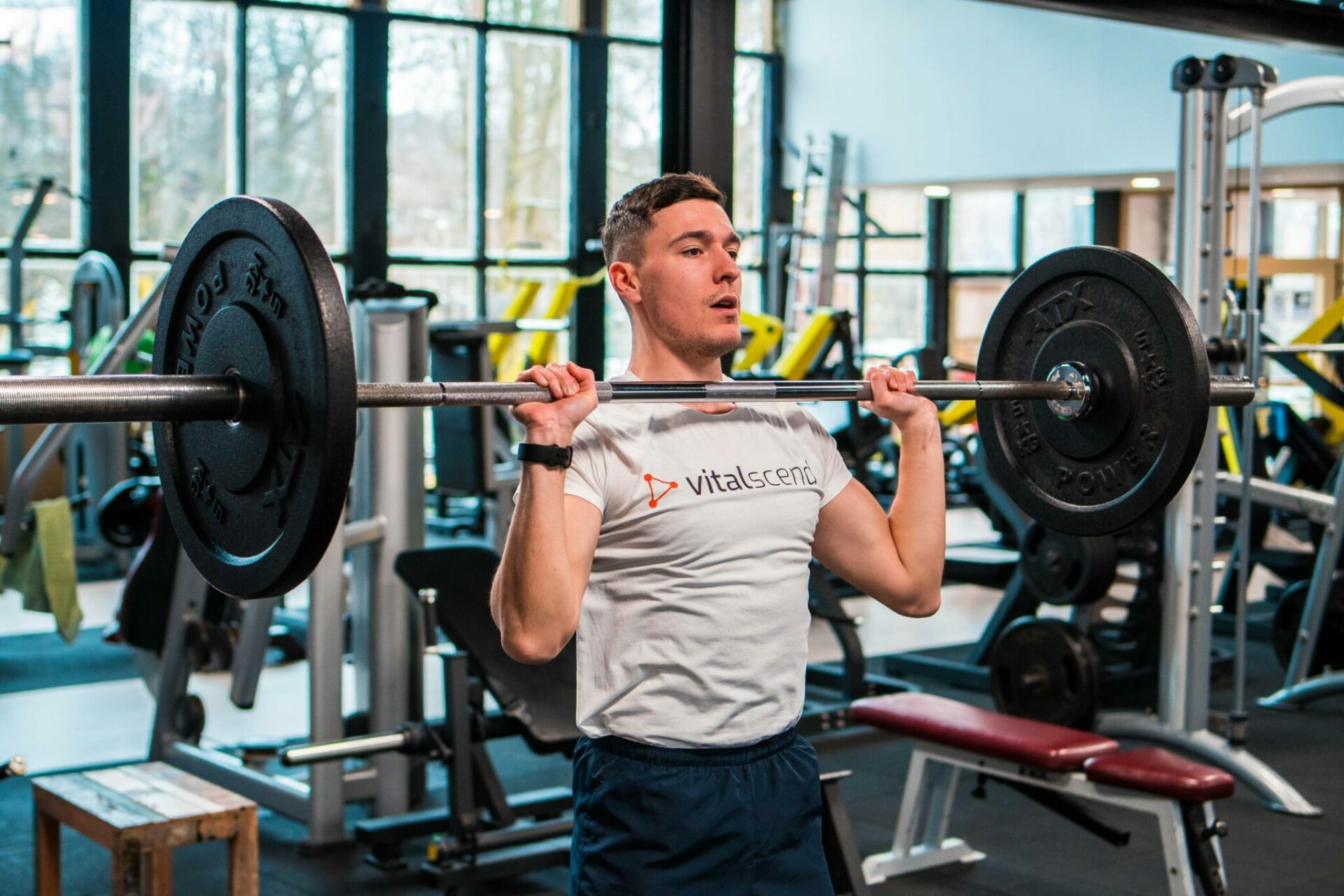
Overhead Press
My favorite exercise is the must for big and powerful shoulders. To perform it correctly without arching your back, you might want to work on your shoulder mobility. Any motion that requires pushing or lifting an object above your head includes all deltoids (middle, anterior, and rear) and this exercise is the best for building one.
Perform
Kinesiology
Muscle Activation
Varieties
Perform: Stand In front of your supported Bar, Grip the Bar Shoulder-width apart or wider, Set & Support the barbell on your shoulders while gripping it with your hands, elbows flexed, Inhale and squeeze your core, hold your breath, Slowly push upwards over your head, push your head forward (extend your neck) and lock your elbows (exhale), lower the weight down while returning your head in a neutral position, lower right before it touches your shoulder and push back up again. Make sure when lifting it, in the upper position the barbell should be over your spine, not too far forward or backward, but in an as straight line as your shoulders allow. Going far too back can injure your shoulders, too far forward will overactive front deltoids.
Kinesiology: Overhead press is pushing motion but done overhead, mainly focusing on anterior deltoids, also known as frontal shoulders. The main motion includes shoulder flexion, up and overhead where we activate the core, upper back muscles, triceps, and upper chest too. It translates to lifting heavy objects overhead or throwing something upwards.
Muscle Activation: Deltoids (anterior, middle, and rear), Triceps, Wrist extensors, Core (abdominals, transverse, oblique, and lower back muscles), Quads, Glutes, and Trapezoids.
Varieties: Push-Press, Dumbbell Overhead Press, Barbell Z Press, Single Arm Landmine Press, and Deadstop Shoulder Press.
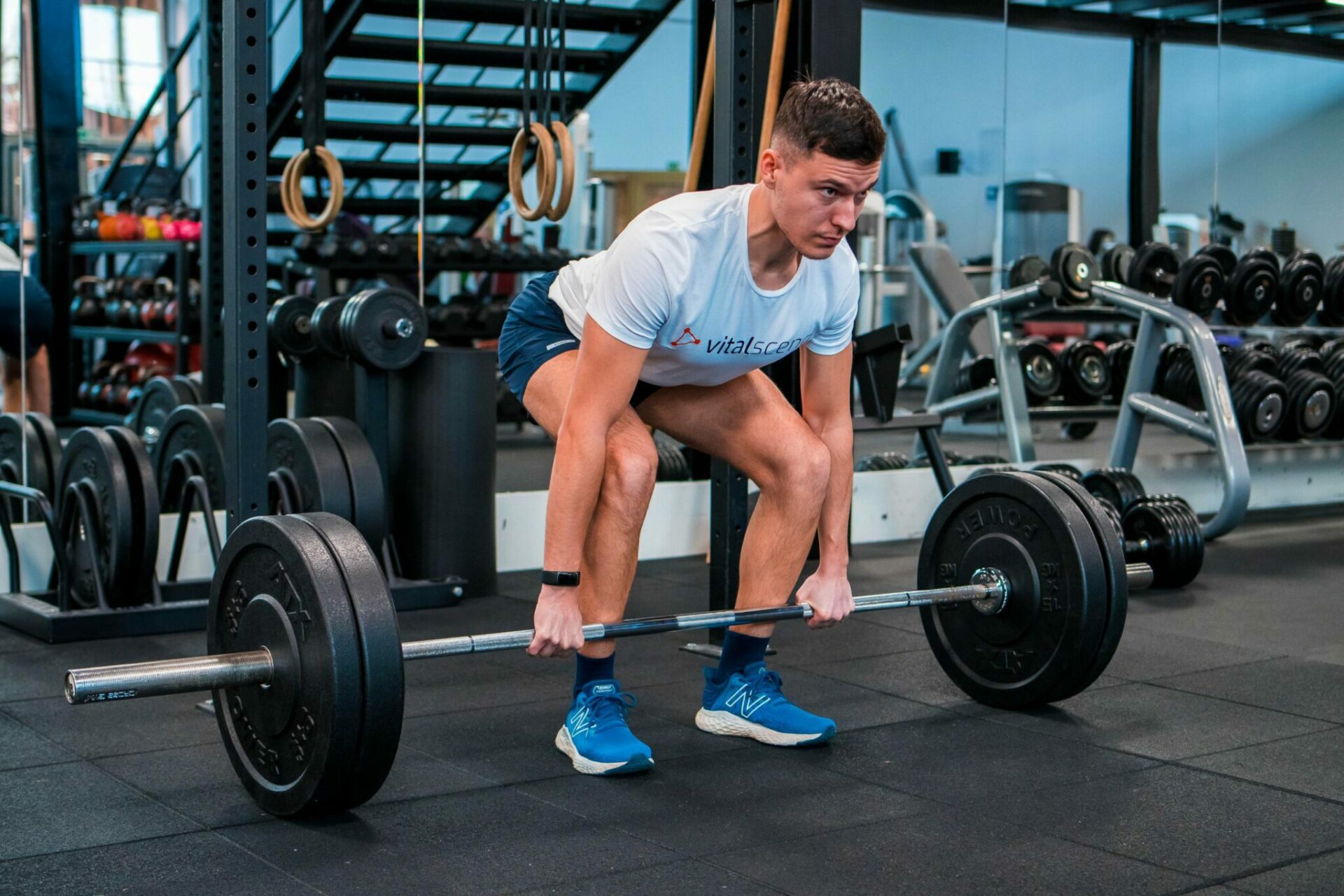
Deadlift
If there are only four exercises from which you can choose, the deadlift goes on the main list along with bench press, pull-ups, and squats. A foundational exercise that builds your hamstrings, lower back, and core muscles but can also improve posture. Deadlift & Squat improvement can lead to improvements in many other lifts and increase your testosterone levels.
Perform
Kinesiology
Muscle Activation
Varieties
Perform: Stand with your feet below the bar, so you can see your toes, then bend over to grip the barbell a little bit wider than your knees, which are facing the direction of your toes, keep your spine neutral and hold your breath tight in while activating your core. The barbell should travel in as straight line as possible, so almost touching the shins, lift your chest, extend the thoracic spine, hold your breath and lift by driving through your heels. Slowly extend your knees when lifting, until the bar comes at knee height, then push your hips forward and stand up straight, without overarching the back and exhale. Once you are there, slowly go back by first by pushing your hips back, lowering the barbell until it reaches knee height, and then flex your knees more, leaving the barbell on the floor.
Kinesiology: Deadlift is not as deadly an exercise as it might sound, in fact, if done properly it is very good for spine stabilizers, hamstrings, quadriceps muscle, and full-body strength. It is a complex compound movement that requires optimal technique, or it can put loads of pressure on your spine. Anything from lifting yourself when standing up, lifting an object placed on the floor or even the basic tasks that require stability is where deadlift can help, at least to keep your spine straight and your body balanced.
Muscle Activation: hamstrings, gastrocnemius, hip abductors, quadriceps, gluteus (medius, minimus, Maximus) Core stabilizers, flexors, and extensors (both frontal and lower back muscles), erector spine, quadratus lumborum, rectus, and transversus abdominis, upper back muscles, shoulders, and rhomboids.
Varieties: Sumo Deadlift, Block Deadlift, Deficit Deadlift, Singe-Leg RDL, Romanian Deadlift, or Trap Bar Deadlift.
Bonus Tips: Intraabdominal pressure is key here since deadlift is one of the highest weights people lift out of all. It is done by inhaling, flexing your core, and holding your breath when doing the lift.
Dips
Dips are arguably one of the best full upper body-complex compound exercises because you are not only working in pushing motion for your chest, but you can manipulate it to increase core, deltoids, traps, triceps, and even wrist muscles. Performing dips in full ROM will require good shoulder mobility for many, to be performed correctly.
Perform
Kinesiology
Muscle Activation
Varieties
Perform: Perform: Add Weighted West or Belt with weight plates, Grip the Dip Bars with your arms extended (don’t jump), squeeze your core tight and slowly lower down, hold your breath and push up (exhale). Make sure you don’t bend to one side and activate your shoulders.
Kinesiology: The dips are focused on pushing motion in a sagittal plane and will mainly strengthen your chest, triceps, and shoulder allowing pushing motion in everyday life, but also improving your shoulder stability and core activation.
Muscle Activation: Triceps, Deltoids (anterior, middle), Chest Pectoralis (minor, major) Core muscles (abdominals, transverse abdominis, quadratus lumborum), and upper back
Varieties: Triceps Dips, Weighted Dips, Chest Dips, Assisted and Bodyweight Dips
Gain Functional Strength
Functional Strength refers to the strength that is translated into our daily activities. Things we have to do as pull the door open, stand out of bed, lift an object overhead, pass some object to someone, and so on.
With compound movements, this is made possible. Think of it, anything you do from squats and deadlifts to pull-ups, push-ups, and dips can translate into your daily movement while working for the bigger muscle groups efficiently in one exercise and improving your posture at the same time.
Why are compounds more effective than isolation?
Compound exercise allows multi-joint movement which at the same time recruits more muscle fibers, and higher muscle mass while moving in longer ROM improving your hip, shoulder, and ankle mobility. Aside from this, compound movements are very natural, primal movements that also help in stabilization and balance, when done correctly.
conclusion
– The top 6 compound exercises are squats, pull-ups, dips, overhead press, deadlifts, and bench press.
– Doing a ratio of 70/30 of compound vs isolation exercises work bests for muscle mass and strength gains.
– Compound movements can translate into your everyday activity, helping you improve your posture and mobility along.
– If you are into compound training, building a cost-effective gym can take up from 400-715$, so if you want to train at home, you can consider investing in it.
Frequently Asked Questions
Which compound exercise activates most muscles in the body?
Deadlift and Squat are complex exercises that activate the biggest muscles and recruit a lot of muscle fibers when performed correctly. The main focus is on the legs and core muscles, but Squat and deadlift are a full-body experience that also works upper body muscles.
How do I improve my squat?
A lot of people profit from improving Hip mobility, Core Strength, and Glute Abductors but consistency is key with squat. Practicing it regularly 2-3 times per week can significantly improve your squat.
How can I improve my bench press?
It’s important to have the right grip, width, and angle in the shoulder and elbow. Consciously activating your chest and triceps is one way, pushing the bar slightly up and back (instead of a straight line) and positioning your elbows slightly inward can improve your bench press.
What are compound exercises?
Compound exercises are a set of exercises that are focused on multi-joint movement, incorporating the biggest muscles in a complex manner that allows translation of that movement in real-life activities.
Can I effectively gain muscle with compound exercises?
Yes, you can. In fact, since compound exercises work bigger muscle groups, it will cause efficient muscle growth due to increased muscle anabolism and testosterone.
Which compound exercises are essential?
The List of foundational Compound exercises includes squat, dips, pull-ups, overhead press, deadlift, lunges, and bench press.

